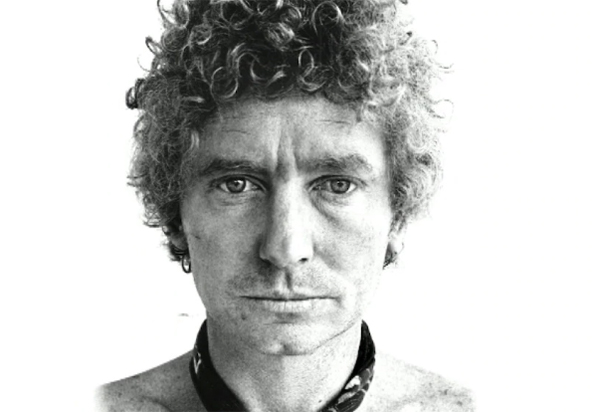Waves V by Brett Whiteley was last seen in 1976. ABC News: Manika Champ.
Manika Champ & April McLennan, Missing Brett Whiteley painting Waves V found during Launceston art gallery audit, ABC News, 5 March 2021
An ink drawing by a famed Australian artist has been re-discovered after almost 45 years, lost in a collection of over 1.5 million items in a northern Tasmanian museum.
Key points:
- The artwork has been missing for almost half a century
- The work, Waves V, is estimated to be worth around $30,000
- Another painting by Whiteley broke an Australian art action record last year
Launceston’s Queen Victoria Museum and Art Gallery (QVMAG) found the Brett Whiteley artwork that was acquired in the 1970s.
The drawing called Waves V was purchased by the gallery in 1976 and was recorded in the museum’s collections.
But the item was never seen again and has never been displayed, prompting the museum to contact Tasmania Police in 2018.
Previously, the Launceston City Council estimated the work was worth around $30,000, but are now looking to get the art re-valued.
The museum undertook a review of its archiving practices and a collection audit has been underway since 2019 leading to the artworks re-discovery.
Tracy Puklowski, general manager of creative arts and cultural services, said the artwork was found in one of the drawers at the museum earlier this week.
“The work wasn’t photographed so we didn’t know what we were looking for visually, which I think is a really interesting challenge when you’re dealing with a missing object,” she said.
“You can see on the bottom right corner that’s his seal or one of the seals that he used.
“The staff were very sure that they knew what they had found, but without that independent verification you just have to keep that little bit of caution.”
The ink drawing has now been verified.
QVMAG’s first audit provides digital catalogue
The audit is aimed at creating a database of the QVMAG’s 1.5 million objects, in what is the first full audit of the collection since the museum’s inception in 1891.
Until the start of the audit, only around 18 percent of the museum’s objects were registered in the database.
QVMAG staff members believed the artwork may have been incorrectly catalogued due to an outdated method of record-keeping used during the 1970s.

Launceston Mayor Albert van Zetten said the audit could take years to complete.
“There were a lot of stories going around at the time that someone might have taken it … it was in a drawer, all of this time, well camouflaged,” he said.
“It’s something that was wrongly categorised, it probably didn’t have the name on it properly, so I can understand how we didn’t find it in the first place.
“As the museum has continued to grow and develop over the many years, 130 years, things have been done probably quickly at times.”
The museum has now committed to digitally document every item, from the smallest native fleas to the largest railway carriage.
Each artwork or object is briefly removed from its storage area, the details are entered into the database, a basic ID photograph is taken and a barcode is allocated before the piece is returned to its storage location.
After the items are entered into the database they can be uploaded to an online catalogue so audiences around the world can engage and research the collection.
Christine Hansen, the museum’s manager of knowledge and content, said the audit had provided a wonderful opportunity for QVMAG.
“Ultimately, a museum holds a record of the past and present for the future and we must preserve this as best we can,” Ms Hansen said.
“We are grateful for the opportunity to have QVMAG’s collection meticulously assessed and documented for present and future communities to treasure and learn from.”

Whiteley is one of Australia’s most celebrated artists, winning the Archibald, Wynne and Sulman prizes several times.
He worked across several mediums, including painting, sculpture and the graphic arts, but he is best known for his paintings of nudes, interiors and harbour scenes.
Last year, a painting by Whiteley broke an Australian art auction record, selling for $6.136 million.
The large painting, called Henri’s Armchair, only took five minutes to find a new owner.

Ms Puklowski said Waves V is an example of Whiteley’s later work and is “very calligraphic in style”.
“It’s not necessarily representative of other styles he worked on over the years but it does represent a very interesting part of his career,” she said.
In 1992, Whiteley died of a methadone overdose on the New South Wales south coast.
His home and studio located in Sydney’s Surry Hills have been turned into a museum that is managed by the Art Gallery of NSW.
Whiteley’s Waves V will be on display at Queen Victoria Art Gallery at Royal Park at the end of March.

